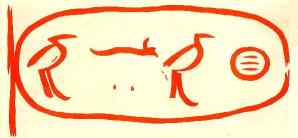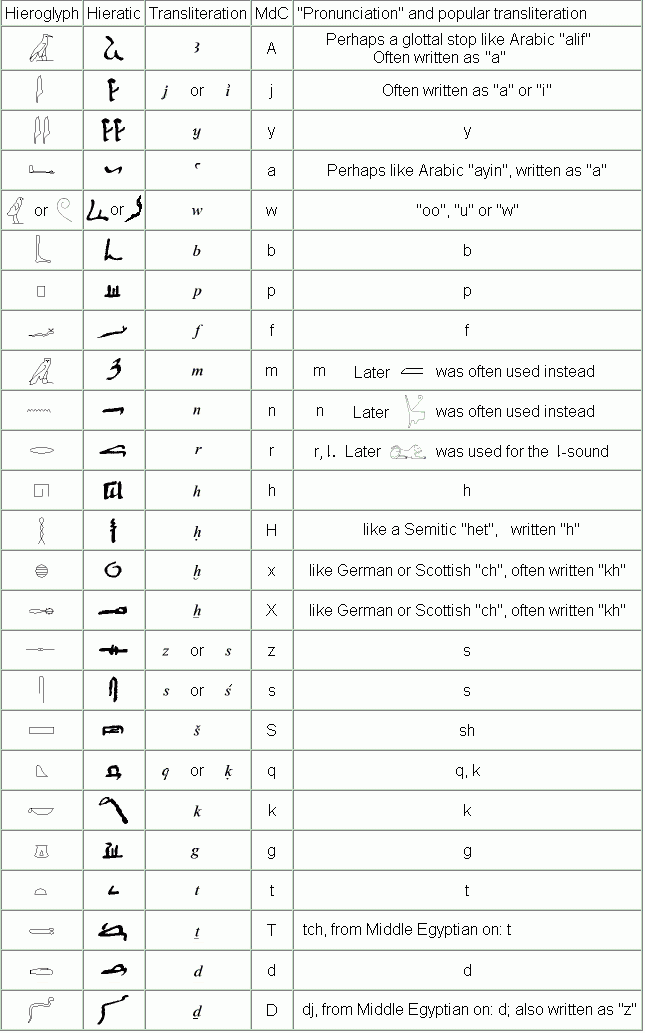
The three writing systems, hieroglyphs, hieratic and demotic, while very decorative, are difficult to represent on an internet page and not very useful to the ordinary reader.

(to be read from right to left)
Source: R. Lepsius, Denkmäler aus Aegypten und Aethiopien Abth. II, Bl.1
Transliterations are therefore often used to represent Egyptian writing. The transliteration system which does not require any special font and is therefore accessible to all, is referred to as Manuel de Codage (MdC). It is based on the Latin script, with some upper and lower-case letters having different values, e.g. the minuscule s retains the pronunciation it has in most European languages, while the capital S is pronounced like the English "sh". The transliteration gives the reader some idea of how the words may have been pronounced, but nobody knows how ancient Egyptian, in any of its historical versions, sounded.
One of the difficulties is the complete absence of representation of vowel sounds in the hieroglyphic, hieratic or demotic system. This has resulted in a plethora of ways of how to transcribe Egyptian texts. The god Amen for instance is also represented as Ammon, Amon, Amun, Imen etc. If there are no historical clues "e" is used as default vowel.
Even when transcribers agree on how a word (probably) "sounded" at a certain time in history, its popular transcription will differ in the various European languages. French would spell the "u" sound in Tutankhamen as "ou", while the Dutch prefer "oe". A German will transcribe the Manuel de Codage X as "ch", in English "kh" is used, while a Spaniard might write "j".
On this site you will find "popular" transliterations which include vowels and Manuel de Codage transliterations, often side by side. In the MdC transliteration full stops, hyphens and other marks inside words are of grammatical significance, but can be ignored when reading the words.
The following tables list some frequently used hieroglyphs, their hieratic counterparts, their scientific transliteration and how some people think they may have sounded. Note that some hieroglyphs can be read in a number of ways: as phonemes, logograms and/or determinatives, e.g. the hieroglyph which can be read as the phoneme pr, as a logogram meaning "house", or as a determinative for buildings. Fortunately for us, most hieroglyphs are not as versatile.

Egyptian demotic 'alphabet' in standard transliteration :
There are hundreds of hieroglyphs, some transliterated by a single, others by two or more Latin letters.

Details of how to represent the hieroglyphs and their transliterations ('Egyptological characters') in machine-readable Unicode format can be found in wikipedia.
Determinatives
A great number of hieroglyphs are not represented at all in transliterations, being used as determinatives—pictorial qualifiers—rather than phonemes.

Hieroglyphic was written in lines from right to left or left to right, or in columns from top to bottom. Hieratic was always written with the signs facing to the right arranged vertically or, since the Middle Kingdom, increasingly horizontally. The individual strokes of the hieratic signs were often written from left to right.
Attalus' home page | 14.07.22 | Any comments?